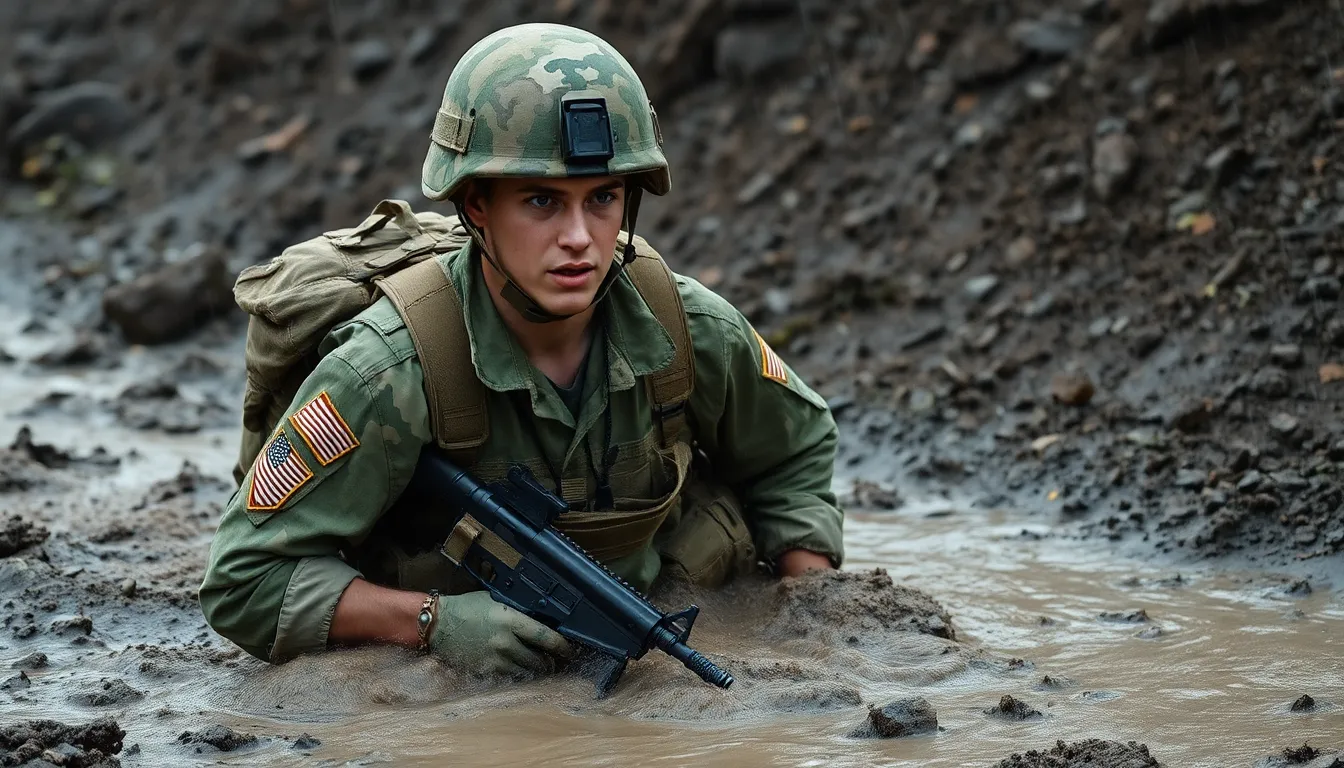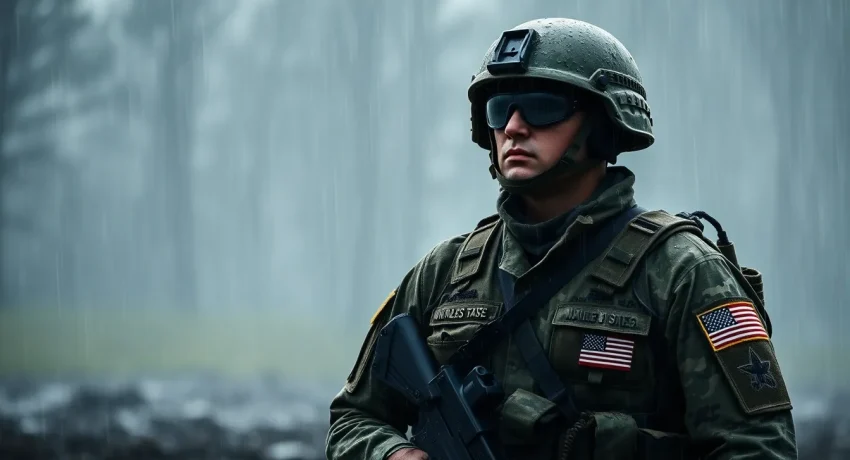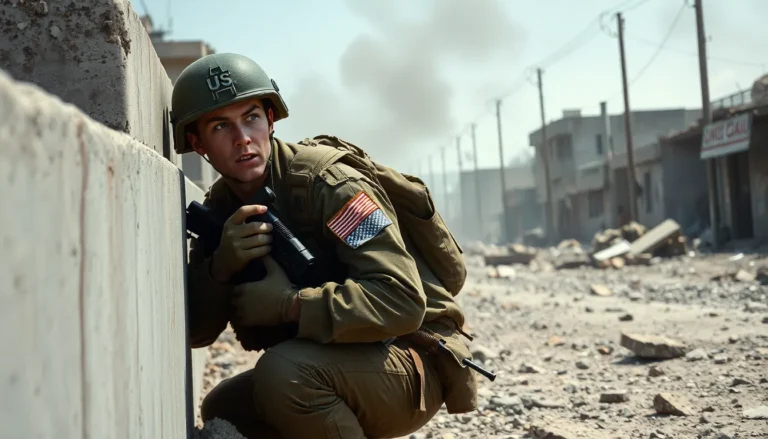Weather on the battlefield isn’t just a backdrop; it’s a game-changer. Picture this: soldiers huddled in the mud during a downpour, their plans washed away faster than a bad haircut. From blistering heatwaves to blinding snowstorms, Mother Nature has a knack for stirring the pot when it comes to military strategy.
Table of Contents
ToggleOverview of Battlefield Weather Effects
Weather conditions play a pivotal role in military operations. Heavy rain can lead to muddy terrain, hindering vehicle movement and foot patrols. Troops may struggle to maintain visibility during snowstorms, making navigation challenging and dangerous. Heatwaves present their own difficulties, potentially causing heat exhaustion among soldiers.
Fog can create a false sense of security, affecting both visibility and reconnaissance efforts. Wind can impact artillery accuracy, leading to misfires or ineffective shots. Rain may also influence air support, as adverse conditions can delay or cancel flights.
Understanding weather patterns becomes essential for planning and executing missions. It determines attack times, troop deployments, and even logistics. Historical battles offer insights, showcasing how weather influenced decisions and outcomes.
Leaders must anticipate these elements, aligning their strategies with forecasts. Ignoring weather impacts can result in operational failures. Adjusting tactics based on immediate conditions often proves crucial for success.
In essence, battlefield weather is a formidable variable. Control over environmental factors leads to a tactical advantage. Preparing for fluctuating weather conditions can make the difference between victory and defeat on the battlefield.
Impact on Troop Movement

Weather conditions significantly affect troop movement during military operations. Understanding these impacts helps strategize better and ensures effective deployment.
Terrain Considerations
Mud from heavy rain creates challenging conditions for vehicles and personnel, slowing down movements. Snow accumulation increases the risk of entrapment, complicating supply routes. Troops must adjust their plans based on terrain changes, particularly after storms. Navigating through flooded areas or icy grounds demands different tactics, which can strain resources. When terrain becomes difficult to traverse, response times increase, potentially compromising mission objectives.
Visibility Issues
Fog can obscure sightlines, rendering reconnaissance efforts ineffective and reducing situational awareness. Rainstorms contribute to diminished visibility, making it challenging for troops to find targets or navigate effectively. During nighttime operations, low-light conditions exacerbate these challenges, making movement more hazardous. Coordinating troop actions becomes critical under such circumstances, necessitating more careful planning. Clear weather proves essential for successful engagements, as visibility directly influences tactical advantages on the battlefield.
Influence on Combat Strategy
Weather conditions significantly influence combat strategies. Military leaders adapt their tactics based on prevailing weather patterns to maximize effectiveness.
Tactical Adjustments
Adverse weather necessitates tactical adjustments. Troop movements may shift to avoid treacherous terrain caused by heavy rain or snow. Visibility issues from fog or storms require alterations in reconnaissance techniques. Units may employ different formations to counteract these challenges, ensuring that forces remain coordinated. For instance, during rain-soaked conditions, commanders often rely on lighter infantry units rather than heavy armored vehicles, preserving mobility and reducing logistical issues. While weather can be disruptive, understanding its impacts allows for quick, effective responses in the midst of uncertainty.
Resource Allocation
Resource allocation is directly affected by weather. During extreme heat, troops may require additional water supplies and shade structures to maintain hydration and morale. Cold weather scenarios lead to increased spending on warm clothing or equipment. Logistics and support elements must adapt accordingly, ensuring that resources align with current operational demands. Bad weather often delays resupply efforts, forcing commanders to prioritize essential items critical for survival and combat readiness. Historical examples, such as the mistreatment of troops during winter campaigns, highlight the importance of discarding unnecessary resources to maintain focus on mission success.
Historical Case Studies
Weather has played a crucial role in shaping military history, impacting strategies and outcomes in numerous battles.
Notable Battles Affected by Weather
The Battle of Waterloo in 1815 demonstrated how rain can affect troop movements. Heavy rainfall turned the battlefield into a quagmire, slowing down Napoleon’s forces and hindering their attacks. Similarly, the Battle of Gettysburg in 1863 faced intense heat, which contributed to heat-related illnesses among troops, affecting combat readiness. The fierce winter conditions during the Battle of Stalingrad from 1942 to 1943 further exemplified weather’s impact, creating dire shortages and discouraging morale. Conditions severely limited visibility and mobility, affecting decision-making on both sides. Each of these battles highlights that the environment can decisively influence military outcomes.
Lessons Learned from Weather-Related Challenges
Military leaders have learned to adapt strategies based on historical weather-related challenges. Adaptability became essential during the Battle of El Alamein in 1942 when commanders timed their assaults to take advantage of favorable weather conditions. Forecasting weather patterns emerged as a vital practice, enabling better planning for troop movements and logistical support. Understanding terrain changes due to rain or snow became critical for safe deployment. Resource management also took precedence; commanders increasingly allocated supplies like warm clothing during winter campaigns and water during heatwaves. Lessons from these battles demonstrate that anticipating weather impacts remains fundamental for successful military operations.
Modern Considerations and Technologies
Modern military operations integrate advanced technologies to address battlefield weather effects. These technologies ensure that commanders have accurate weather forecasting data, thus facilitating informed decision-making. Meteorological satellites collect real-time atmospheric information, providing insights into impending weather changes. Sophisticated radar systems identify severe weather patterns, allowing for timely adjustments to mission plans.
Commanders utilize mobile weather stations to gather localized data on temperature and humidity. These stations assist units in planning troop movements and logistic needs according to current environmental conditions. Additionally, predictive analytics software aids in modeling weather impacts on operations, enabling proactive adjustments.
Drones offer another crucial advancement. Equipped with sensors, they gather data on real-time weather conditions over battlefields. Such information enhances situational awareness, allowing for quicker responses to changing environmental factors. Unmanned aerial vehicles also assist in reconnaissance, providing visibility data that informs tactical decisions.
The integration of artificial intelligence in weather forecasting systems represents a significant evolution. AI processes vast amounts of historical and current data, improving prediction accuracy. Such advancements reduce uncertainties tied to weather, enabling military strategists to anticipate challenges posed by adverse conditions.
Utilizing these technologies contributes to tactical advantages during operations. Forces gain the ability to adapt strategies swiftly, ensuring missions remain viable despite unexpected weather shifts. Understanding and implementing modern weather technologies becomes essential for maintaining operational effectiveness, ultimately enhancing military performance on the battlefield.
Weather’s influence on military operations is undeniable. It shapes strategies and outcomes in ways that can determine the success or failure of missions. Understanding weather patterns and their effects on the battlefield is essential for military leaders.
As technology continues to evolve, the ability to predict and adapt to weather conditions enhances operational effectiveness. By leveraging advanced forecasting tools and real-time data, commanders can make informed decisions that mitigate the challenges posed by adverse weather.
Ultimately, the integration of weather considerations into military planning not only improves tactical advantages but also underscores the importance of flexibility and preparedness in the face of nature’s unpredictability.




